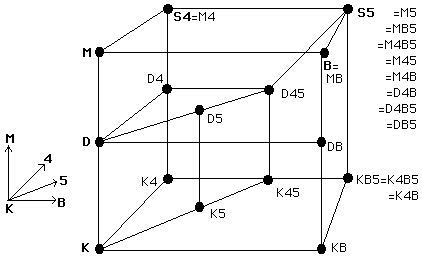This paper was posted a while back, here's the link:
http://www.princeton.edu/%7Efara/papers/counterparts.pdf
for this post:
<> is the possibility daimond
[] is the necessity box
A is the universal quantifier
E is the existential quantifier
Williamson and Fara argue that any modal theory needs an actuality operator to handle sentences like this:
(4) it might have been that everyone who is in fact rich was poor
Without an actuality operator, CT would translate it as follows:
(4*) <>Ax(Rx -> Px)
or
(4**) Ax(Rx -> <>Px)
(4*) says that possibly all rich people are poor. That's not a good translation of (4) because (4*) excludes the possibility of some people who are in fact poor being rich while (4) does not. (4**) is not a good translation because it asserts that each individual who is rich may have been poor. This is different from asserting that it could've been the case that they're all poor.
Williamson and Fara introduce the actuality operator to solve this problem:
for any sentence S:
ACT S is true at a world iff S is true at the actual world
This provides a correct translation of (4):
(4A) <>Ax(ACT(Rx) -> Px)
The problems arise when the question is raised of how this should be implemented into counterpart theory. W&F propose a few formulations:
(L1) ACT S(a)w is Ex(Ix@&Cxa&S@(x))
(L2) ACT S(a)w is Ax[(S@(x">Ix@&Cxa)->S@(x)]
These fail because they validate known contradictions. For instance, L1 translates
(12) <>Ex(ACT Fx iff ACT~Fx)
into
(13) ExEw(Ixw&[Ey(Iy@&Cyx&Fy)iffEy(Iy@&Cyx&~Fy)]).
(12) is inconsistent while (13) can be satisfied in certain models of CT. Bad translation. To see how (13) is satisfiable, just picture a situation in which one has more than one actual world counterpart. (L2) and the rest of W&F's proposals have the same drawback. They find, for each one, some logical contradiction that is translated into a satisfiable sentence.
W&F are very thorough, and ultimately correct (I think) about the formulations of the CT actuality operator they come up with.
My confusion is what stops CT from adopting a more neutral ACT operator that doesn't invoke counterparts? Consider:
(AD) ACT S(a)w iff Ex(Ix@&x=a&S(x))
(L1) & (L2) as well as the other suggestions in the paper try and make it so you can speak of non-actual individuals (that are counterparts of actual individuals) and say true things of how they actually are. Consider the hypothetical Humphrey at world w that didn't win. With the actuality operator (L1) you could truely say of him that he actually lost. That is:
(H) Humphrey(w) actually lost
This would come out false on (AD) translation:
(HAD) Ex(Ix@&x=h&L(x))
This may be seen as a drawback of (AD), but I don't see it as such. It's perfectly reasonable to say that the non-actual winner Humphrey actually won. That is to say, evaluated at this world, the proposition about non-actual Humpthrey to the effect that he won is true. Another worry may be that (H2) would get the wrong result.
(H2) Necessarily Humphrey actually lost.
(HAD) would translate that to:
(H2*) AwAx((Cxh&Ixw)->Ey(Iy@&y=x&L(y))
But (H2*) is false. So we get the right result again. This fits for Lewis's indexical account of "Actually". What about such sentences evaluated at other worlds? Surely at world w, all ordinary sentences involving the actuality operator shouldn't come at false! To this I'd answer that when evaluating a sentence at another world, substitute that world in for @. That's not ad-hoc, after all according to CT according to that world w IS the actual world.
I haven't checked (AD) thoroughly, but I believe the problems involving the other trials for an actuality operator were problems in invoking the counterpart relation. (AD) does not.
Friday, July 27, 2007
Subscribe to:
Post Comments (Atom)

No comments:
Post a Comment